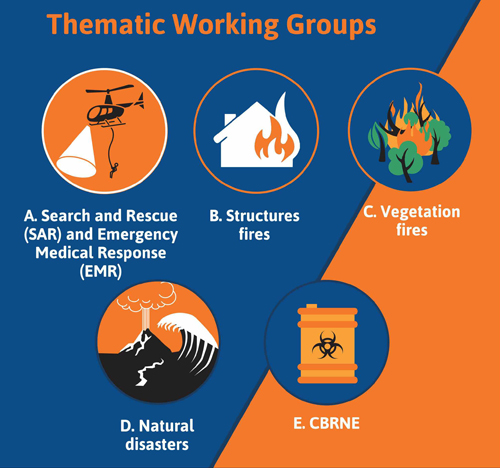IN-PREP (An INtegrated next generation PREParedness programme for improving effective inter-organisational response capacity in complex environments of disasters and causes of crisis)
Client: EU (Horizon 2020)
Grant agreement no: 740627
Coordinator: ICCS (Instiute for Commuincation and Computer Systems)
Consortium: 20 partners from 7 European countries
Term: 3 years, Start: September 2017
Budget: ~ € 8 million EU funding, ~ total of € 9,5 million
Project Type: Innovation Action (IA)
Objective: European countries confront the rising specter of transboundary crises, which cross national borders as well as policy boundaries, with speed and ease, threatening the continuing functioning of critical infrastructures and the well-being of many citizens. Transboundary crises pose a specific set of complex challenges for which Europe is – despite recent policy initiatives – still ill prepared.
IN-PREP has recognized and will address three challenges in the context of transboundary crises:
1. Member states need to develop shared response planning.
2. Countries need to share information in real time. This sense-making challenge requires a way to have multiple countries and agencies create a shared picture of an emerging crisis based on multiple sources.
3. Countries need to coordinate the use of critical resources to ensure a timely response and to avoid waste and misspending.
To accomplishing above principal challenges, IN-PREP will establish and demonstrate a next generation programme by enabling: 1) a reference implementation framework of coordination operations (Handbook of Operations) and 2) a novel multi-disciplinary training platform (Mixed Reality Preparedness Platform) at the service of the entirety of civil protection stakeholders (firefighting units, medical emergency services, police forces, civil protection units, control command centers, assessment experts).
The proposed framework will not only improve preparedness, response planning and scenario building but can be also applied during joint interventions, thus improving the joint capacity to respond. Moreover, the IN-PREP training programme is constructed around a rich set of Exercises and Demonstrations representative of high risk threats, disasters and causes of crisis that the European Civil Protection Community has faced and most importantly still needs to be better prepared on.
INT Tasks: contributes to the identification of User Needs and Ethical, Legal and Human Factors in System Development. It analyses success and failure factors in transboundary crisis response as well as organizational, policy, social, and human factors contributing to efficient crisis management. INT leads the development of a cross-organisational handbook of Transboundary Preparedness and Response Operations and the identification of key performance indicators and critical success factors in transboundary crisis management.
 Fraunhofer Institute for Technological Trend Analysis INT
Fraunhofer Institute for Technological Trend Analysis INT
